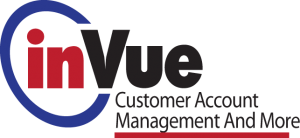Help customers choose full service over discount
Posted: 06/01/16
By Richard Rutigliano, PriMedia, Inc.
Part 1 of 7
EDITOR'S NOTE: This is the first installment of a seven-part series in which PriMedia President Richard Rutigliano will offer strategies and tactics for mastering the constant marketing challenges that Oilheat dealers face.
What's the difference between a discount Oilheat customer and a full-service customer? While that is an interesting question to ponder—and there are people who are firmly in one camp or the other—the truth is that many homeowners could go either way. They are not sure what they need, so they could either succumb to the temptation of a low price or embrace the convenience of a one-stop home comfort provider.
Full-service companies can grow their customer lists by targeting that blurry line between discount and full service. Many consumers are of two minds, because they know their choice involves tradeoffs. They love a good price, but they believe that you get what you pay for. They'd love to pay less for their oil, but they also want the best products and services.
Price is an albatross that won't fly away. Oilheat is sold by the gallon, and it's a commodity that appears virtually identical from one company to the next. Anyone who frequents a low-price gas station can understand why an Oilheat customer might be inclined to choose a discounter over a higher-priced competitor.
If a full-service company has all the business it wants, it can afford to focus on customers who embrace its model and don't think much about the per-gallon price. In these changing times, though, many companies are eager to grow market share and willing to try new things. If discount oil companies are cutting into your base and winning customers that could be yours, it makes sense to reach out to those homeowners who don't know exactly what they want.
The full-service model is not, in and of itself, a tough sell. Customers know that heating systems require maintenance, and they appreciate the idea of using one company for their fuel and service. Many of them have also had bad experiences with discounters.
The tricky part is knocking them off their price fixation. If a discounter tells a customer that they'll deliver their oil and provide their annual tune-up, it falls to you to persuade them that they're better off with you. To help customers choose your full-service model, you need to make your company very appealing. At the same time, you need to help them connect your value proposition to their personal values.
You know what makes your discount competitors appealing. They put their low price on their website and postcards and advertise it on oil-company-finder sites that list daily prices. If you are not advertising your price, what are you doing to attract customers? What do they find in your advertising or on your website that stops them in their tracks and makes them say to their spouse, "Let's go with these guys."?
Give them a better experience
Consumers are inspired by the prospect of a better experience. They spend more for the Acura to get the smooth, quiet ride and the reliability. They choose Starbucks for the atmosphere and the delicious beverages. They like Amazon.com for the convenience, selection and quick delivery. What can you do to make them want to spend a little more to buy your Oilheat?
To answer that, you need to look at how customers think. Clearly price is not everything, or Mercedes Benz, Dolce & Gabbana and Ben & Jerry's would all be defunct. People are willing to spend, but they need to believe in what they're buying. Some consumers prefer premium products and services, and many companies have achieved great success tapping into their desires.
Oilheat delivery and home comfort service will never have the conspicuous consumption appeal of a luxury automobile or the exquisite taste of gourmet ice cream, but an Oilheat company can still tap a customer's desire for the best things in life. Oilheat connects to two highly esteemed values that inspire Americans to spend—home (better comfort) and family (safety, comfort).
Those are excellent connections that dealers should use, but they are not enough by themselves, if only because so many home comfort companies have been pushing those buttons in their marketing for decades. You need to look deeper and make new connections.
Many consumers rightly view heating and cooling as one of their best opportunities to benefit the environment through conservation, and that is a topic where a company can still achieve differentiation. Like home and family, conservation might seem like a tired topic, but it still has plenty of legs. Energy crises have come and gone in the past, but most people are on board with the reality of tight energy, and no one expects a return to "good old days." Most homeowners want to use less energy—just like they want to improve their home and give their family all the best—and they would appreciate expert guidance from a trusted expert.
By positioning your company as an authoritative leader with a solid program for energy conservation, you greatly improve your appeal—while shedding a lot of traditional Oilheat baggage. It's a great start; but there's more. You also need to meet rising customer expectations for convenience and service. Companies across the economic spectrum have taught consumers to expect online convenience and added value, and Oilheat dealers can now deliver the same goods.
Online account management is a great place to start. When you give customers the ability to look up their account details, pay online, place orders and schedule service, you deliver convenience similar to what customers are getting from huge online retailers like Amazon. You can also add value to your services with an online rewards program that engages customers and gives them a little something extra. Rising energy prices have made Oilheat a big-ticket item, so the added value is particularly welcome from you.
The combination of strong messaging, online convenience and added value will make your company a compelling choice, so be sure to remove any obstacles to becoming your customer. Include a "Become a Customer" button on the home page so customers can act immediately to secure your services- and stop their comparison-shopping.
Address the questions head-on
Even with your compelling presentation, some customers and prospects are still going to wonder why they should pay more for their oil. Address their questions head-on with solid information about the quality of your services. Include a page or a section on your website that compares your full-service program to what discounters offer. Identify your important points of value and explain them in terms of the customer's real needs. Talk about how the additive you use is better for their equipment. Tell them how your large service team is available for prompt response and expert service work. Talk about your training, your insurance, your truck fleet, your customer service representatives—everything that touches and improves your customers' lives.
Take that information beyond your website, too. Use a company newsletter and other outreach to remind existing customers about the importance of your added values. Send postcards to prospects that raise the question of full service vs. discount and refer them to the information on your site. Raise the issue on your Facebook page and refer customers to your online resources.
You might also want to improve the answers your CSRs give when people call and ask what your price is. Develop a standard answer that can raise the caller's curiosity, such as "Who will do your burner service?" or "Are you seeking the best price or the best value?" The true price-shoppers will not take the bait, but people who fear that they'll be under-served by a discounter might want to hear more. Develop simple, compelling talking points for your CSRs and salespeople. Prepare a flyer, bill stuffer or brochure on the topic—and send it off to prospects immediately after you speak with them.
You won't convince everyone that full service beats discount, but you might help some customers see that discount pricing is actually "dangerously low." In turn, you might keep more of your customers in place and win some others who were seriously considering discount oil.
Next month: How to make it easy for customers to do business with you.
September Marketing Reminders
As part of this series, I am now including reminders of steps that dealers can take each month to strengthen their business. Here are my suggestions for September:
- Add a Full Service vs. Discount Page to Your Website
- Plan a Winter Newsletter
- Update Your Message-On-Hold for Fall
- Prepare Fall Special Offers on New Equipment and Upgrades.
- Post Fall Specials on Your Website
- Mail a Fall Specials Postcard or Letter to Customers
- Post Fall Specials on Your Facebook/Social Media Sites
- Update Keywords and Phrases for Your Fall Google Ads
- Recommended Bill Inserts For September/
October: Choose Full Service, Equipment Upgrades
Richard Rutigliano is President of PriMedia, Inc., a full service marketing and communications firm with offices in New York City, Long Island and Boston. The company is now offering free marketing consultations to Oilheat retailers. Phone: 800-796-3342, or visit their Web sites at www.primediany.com and www.oilheat-advertising.com.












